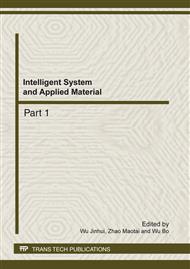[1]
Schryvers, A. B and Gonzalez, G.C. Receptors for transferring in pathogenic bacteria are special for the host's protein[J]. Can. J. Microbiol. 1990, 36(1): 145-147.
Google Scholar
[2]
Irwin, S W, N Averil, C Y Cheng, Schryvers, A B. Preparation and analysis of isogenic mutants in the transferrin receptor protein genes, TbpA and TbpB, from Neisseria meningitides[J]. Mol Microbiol, 1993, 8(6): 1125-1133.
DOI: 10.1111/j.1365-2958.1993.tb01657.x
Google Scholar
[3]
Clarke T E, Tari L W and Vogel H J. Structural Biology of Bacterial Iron Uptake Systems[J]. Current Topics in Medicinal Chemistry 2001, 1(1): 7-30.
DOI: 10.2174/1568026013395623
Google Scholar
[4]
Baltes, N, Tonpitak, W, Gerlach, G. F, Pauka, Actinobacillus pleuropneumoniae iron transport and urease activity: effects on bacterial virulence and host immune response[J]. Infect. Immun, 2001, 69(1): 472-478.
DOI: 10.1128/iai.69.1.472-478.2001
Google Scholar
[5]
Goethe, R, Gonzales, O. F, Lindner, T, et al. A novel strategy for protective Actinobacillus pleuropneumoniae subunit vaccines: detergent extraction of cultures induced by iron restriction. Vaccine[J]. 2000, 19(7): 966-975.
DOI: 10.1016/s0264-410x(00)00212-7
Google Scholar
[6]
Felsenstein J. Inferring phylogenies from protein sequences by parsimony, distance, and likelihood methods[J]. Methods Enzymol, 1996, 266(2): 418-427.
DOI: 10.1016/s0076-6879(96)66026-1
Google Scholar
[7]
Kopp J, Schwede T. The SWISS-MODEL Repository: new features and functionalities[J]. Nucleic Acids Research, 2006, 34(1): 315-318.
DOI: 10.1093/nar/gkj056
Google Scholar
[8]
Geourjon C, Deleage G. significant improvements in protein secondary structure prediction by consensus prediction from multiple alignments[J]. Comput Appl Biosci, 1995, 11(6): 681-684.
DOI: 10.1093/bioinformatics/11.6.681
Google Scholar
[9]
Bendtsen J D, Nielsen H, Heijne G, Brunak S. Improved prediction of signal peptides: SignalP 3. 0[J]. J. Mol. Biol., 2004, 340(2): 783-795.
DOI: 10.1016/j.jmb.2004.05.028
Google Scholar
[10]
Bullen JJ, Griffiths E. Iron and infection. molecular, physiological and clinical aspects. second Edition. Chichester: John Wiley & Sons. 999.
Google Scholar
[11]
Morton, D, Williams, P. Siderophore-independent acquisition of transferrin-bound iron by Haemophilus infuenpae type b[J]. J Gen Microbiol, 1990, l36(2): 927-933.
DOI: 10.1099/00221287-136-5-927
Google Scholar
[12]
Gray-Owen D., Schryvers, A B. Identification and characterization of genes encoding the human transferrin binding proteins from Haemopbilus inptlenpae[J]. Infect Immune, 1995, 63(3): 1201-1210.
DOI: 10.1128/iai.63.4.1201-1210.1995
Google Scholar
[13]
Moraes T F, Yu R H, Strynadka N C J and Schryvers A B. Insights into the Bacterial Transferrin Receptor: The Structure of Transferrin-Binding Protein B from Actinobacillus pleuropneumoniae[J]. Molecular Cell, 2009, 35(1): 523–533.
DOI: 10.1016/j.molcel.2009.06.029
Google Scholar


